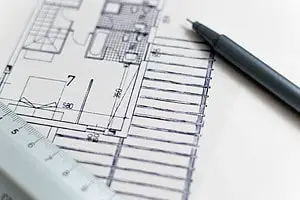Architecture school can be a challenging and demanding experience for students, requiring a high level of creativity, technical skill, and perseverance. As such, mentorship and support systems are crucial in helping students navigate the complexities of the architectural profession and achieve success in their studies.
These systems can take many forms, including formal mentorship programs, peer support groups, networking events, workshops and conferences, online communities and resources, and campus resources.
The benefits of mentorship and support systems for architecture students are manifold. They can provide students with guidance and advice from experienced professionals, offer opportunities for skills development and career advancement, and foster a sense of community and belonging within the architecture school.
Additionally, these systems can help students to develop the resilience and self-efficacy necessary to succeed in a competitive and demanding field. This article will explore the various forms of mentorship and support available to architecture students, and the ways in which these systems can enhance student success and well-being.
Key Takeaways
- Mentorship and support systems are crucial for success in architecture school.
- These systems can take many forms, including formal mentorship programs, peer support groups, networking events, workshops and conferences, online communities, and campus resources.
- Finding the right support group is crucial in creating a safe and supportive environment.
- Balancing support systems with independent work is essential for academic success.
Understanding the Importance of Mentorship and Support in Architecture School
The significance of mentorship and support systems in architecture school is a crucial factor that warrants scholarly attention as it plays a pivotal role in shaping student success.
Mentoring involves a relationship between a more experienced person (the mentor) and a less experienced person (the mentee) that is focused on the growth and development of the mentee.
In architecture school, mentorship can take many forms, including academic advising, career guidance, and personal support.
Support systems in architecture school are also essential for student success. These systems provide students with the resources, services, and tools needed to thrive in a demanding academic environment.
Support systems can include access to academic tutoring, career services, mental health resources, and financial aid.
When students are provided with effective mentorship and support systems, they are better equipped to overcome challenges and achieve their academic and professional goals.
Therefore, it is critical for architecture schools to prioritize the development of robust mentorship and support systems for their students.
Formal Mentorship Programs
Formal mentorship programs have been shown to enhance the academic and personal growth of individuals pursuing professions in the architecture field, providing a sense of fulfillment and guidance that can lead to greater career achievements. These programs are usually structured and organized, with clear goals and objectives that are aligned with the mentee’s personal and professional aspirations. The mentor serves as a role model, advisor, and supporter, providing feedback, advice, and encouragement to help the mentee develop their skills, knowledge, and confidence.
A formal mentorship program typically involves a mentee and a mentor who are paired based on their shared interests, skills, and experiences. The program may include regular meetings, workshops, and training sessions that are designed to help the mentee acquire the knowledge and skills needed to succeed in the architecture field. The mentor may also provide the mentee with access to their professional network, helping them make valuable connections that can lead to career opportunities. Overall, formal mentorship programs play a crucial role in supporting the success of architecture students, providing them with the guidance and support they need to achieve their full potential.
| Advantages | Disadvantages | |||
|---|---|---|---|---|
| Provides guidance and support | May be time-consuming | |||
| Enhances academic and personal growth | May not be available to all students | |||
| Leads to greater career achievements | May not be effective if the mentor is not a good match | Can offer valuable networking opportunities | Could perpetuate bias or favoritism if not managed properly |
Peer Support Groups
Peer support groups can provide numerous benefits for students seeking academic and personal support.
Finding the right support group can be crucial in creating a safe and supportive environment for students to openly discuss their experiences and challenges.
Building strong relationships within a support group can be achieved by establishing trust, active listening, and providing non-judgmental support to fellow members.
Benefits of Peer Support Groups
Collaborating with like-minded individuals in a supportive environment can greatly enhance the academic experience and increase the likelihood of success for students in architecture school. Peer support groups provide a range of benefits that can help students navigate the challenges of architecture education. These benefits include:
-
Improved motivation and accountability: Peer support groups can help students stay on track with their studies and encourage them to keep pushing forward towards their goals.
-
Enhanced learning: Collaborating with peers can provide fresh perspectives and new insights into course materials. This can help students gain a deeper understanding of the subject matter and improve their overall academic performance.
-
Reduced stress: Architecture school can be a stressful experience, but peer support groups can provide a safe and supportive space for students to share their concerns and receive emotional support.
-
Increased confidence: Peer support groups can help students build confidence in their abilities and develop a sense of belonging within the architecture community. This can be especially valuable for students who may feel isolated or uncertain about their future in the field.
Overall, peer support groups offer a valuable opportunity for students to connect with others who share their passion for architecture and to develop the skills and confidence needed to succeed in their studies and beyond.
Finding the Right Support Group
One effective way to locate a suitable support group for architecture students is by conducting thorough research on available options. This research can be done by attending career fairs, talking to professors and other students, and searching online. It is important to find a group that aligns with individual needs and goals, whether that be focused on academic support, professional development, or personal well-being.
Additionally, it is beneficial to attend meetings or events to get a sense of the group’s culture and see if it is a good fit. Once a potential support group is identified, it is important to take an active role in participating and contributing to the group. This includes attending meetings, sharing experiences and knowledge, and seeking help when needed.
It is also important to maintain a positive and supportive attitude towards fellow members, as this can lead to a more positive and productive group dynamic. By finding the right support group and actively engaging in it, architecture students can gain valuable resources, network with peers and professionals, and improve their overall success and well-being.
Tips for Building Strong Relationships within a Support Group
Establishing strong relationships within a support group can enhance the benefits gained by architecture students and contribute to a more positive and productive group dynamic.
One tip for building strong relationships within a support group is to actively listen to others. This means paying attention to what they are saying, asking questions for clarification, and showing empathy and understanding. By listening actively, students can build trust and respect with their peers, which can create a more supportive environment where everyone feels comfortable sharing their thoughts and ideas.
Another tip for building strong relationships within a support group is to be open and honest in communication. This means expressing thoughts and feelings in a respectful and constructive manner, while also being receptive to feedback. By communicating openly and honestly, students can build deeper connections with their peers and foster a sense of trust and understanding. This can also help to address any conflicts or issues that may arise within the group, as everyone feels comfortable expressing their thoughts and working towards a solution together.
Overall, building strong relationships within a support group is essential for architecture students to succeed in their studies and prepare for their future careers.
Industry Networking Events
Attending industry networking events has been identified as a valuable opportunity for architect school students to form professional connections and gain exposure to real-world practices and perspectives. These events provide a platform for students to interact with industry experts, learn about new trends and technologies, and exchange ideas with their peers. Furthermore, students can also gain knowledge about various job opportunities, internships, and career paths that they can pursue after graduation.
To make the most out of industry networking events, architect school students can follow these tips:
- Research the event beforehand to understand its purpose, attendees, and schedule.
- Prepare and practice an elevator pitch to introduce themselves and their interests to potential employers or industry leaders.
- Bring a business card or resume to share with those they meet.
- Follow up with any contacts made after the event to maintain the relationship and explore potential opportunities.
Overall, industry networking events provide a valuable platform for architect school students to gain exposure to real-world practices and perspectives, form professional connections, and explore potential career paths. By following these tips, students can make the most out of these events and set themselves up for success in the future.
Workshops and Conferences
Participating in workshops and conferences is a practical way for individuals in the architecture industry to enhance their skills and knowledge, and stay up-to-date with the latest trends and techniques. These events bring together professionals from various fields and offer a platform for sharing ideas, experiences, and knowledge. Workshops and conferences provide a valuable opportunity for architects to learn from experienced practitioners, engage in discussions and debates, and gain new insights into the industry. They also offer a chance to network with other professionals and build relationships that can help to advance their careers.
Attending workshops and conferences can help architects to develop new skills and techniques that can be applied to their work. These events provide opportunities for hands-on learning, where participants can engage in practical exercises and learn from experienced practitioners. Workshops and conferences also offer a chance to stay up-to-date with the latest technologies and trends in the industry, which is essential for architects to remain competitive in the market.
Additionally, these events provide a supportive environment for architects to connect with others who share their passion for the field and can offer mentorship and support. In sum, workshops and conferences are a valuable resource for architects who want to enhance their skills, knowledge, and network, and advance their careers in the industry.
Online Communities and Resources
Online communities and resources have become increasingly prevalent in the architecture industry, providing architects with access to a wealth of information, tools, and support from peers and experts.
In recent years, these online communities have also become valuable resources for architecture students. These communities offer a variety of benefits, including access to materials and resources related to architecture programs, forums for discussion and collaboration, and opportunities to connect with professionals in the field.
Online resources for architecture students can include websites dedicated to architecture education, such as ArchDaily and Architizer, which offer articles, tutorials, and other educational resources.
Social media platforms such as LinkedIn and Instagram also offer opportunities for students to connect with professionals in the field and stay up-to-date on industry trends.
Additionally, online forums and discussion boards, such as the Architecture Student Forum, provide a space for students to ask questions, share their work, and collaborate with peers.
Overall, online communities and resources have become an essential part of architecture education, providing students with access to a wealth of knowledge and support.
Campus Resources
Campus resources are an essential component of a comprehensive architecture education, providing students with access to specialized equipment, software, and facilities. The architecture school environment can be demanding, and students often need support to succeed. Campus resources can provide this support, helping students to develop their skills and knowledge, and to overcome challenges.
Architecture schools offer a range of resources to support students. These resources may include digital fabrication labs, wood and metal shops, photography studios, and computer labs equipped with specialized software. Students also have access to libraries, where they can find books, journals, and other resources to support their research and learning. Additionally, architecture schools often have writing centers, tutoring services, and academic advisors who can provide guidance and support. By taking advantage of these resources, architecture students can enhance their learning experience and achieve greater success in their studies.
| Campus Resource | Description |
|---|---|
| Digital Fabrication Labs | These labs provide students with access to computer-controlled tools such as 3D printers, laser cutters, and CNC routers. |
| Computer Labs | These labs are equipped with specialized software such as AutoCAD, Revit, and Rhino. |
| Wood and Metal Shops | These shops offer tools and equipment for working with wood and metal, including saws, drills, lathes, and welding equipment. |
| Libraries | Architecture schools often have extensive libraries with books, journals, and other resources related to architecture and design. |
| Writing Centers | These centers offer writing support and guidance to students, helping them to improve their writing skills. |
| Tutoring Services | Tutoring services can provide students with one-on-one support in specific areas of study. |
| Academic Advisors | These advisors provide guidance on academic matters, including course selection and degree requirements. |
Balancing Support Systems with Independent Work
Achieving academic success requires a balance between seeking support from available resources and cultivating independence. Finding the right equilibrium between these two factors can be challenging, but it is essential for students to maximize the benefits of support systems while maintaining their independence.
To achieve this, students should adopt a proactive approach and utilize available resources strategically, ensuring they remain in control of their academic progress while benefiting from the support and guidance of their mentors and peers.
Finding the Right Balance between Support and Independence
Optimizing the balance between the level of support provided and the degree of independence afforded to architecture students is a critical aspect of ensuring their academic success.
On one hand, students need a supportive environment that nurtures their creativity and encourages exploration of new ideas.
On the other hand, they also need to develop their own independent thinking and problem-solving skills, which are essential for professional success in the field of architecture. Finding the right balance between these two aspects is crucial to developing well-rounded and successful architects.
One way to achieve this balance is to establish a mentorship program that provides students with access to experienced professionals in the field of architecture.
Mentors can offer guidance and support, while also encouraging independent thought and exploration.
Additionally, creating a supportive community within the architecture school can help students feel more comfortable taking risks and trying new approaches to their work.
Ultimately, a supportive and encouraging environment that also emphasizes independent thinking and problem-solving skills is key to ensuring the success of architecture students.
Tips for Maximizing the Benefits of Support Systems while Maintaining Independence
To fully utilize the benefits of a supportive environment while promoting independent thinking, it is important for architecture students to engage in activities that challenge their perspectives and encourage critical thinking. One way to do this is to participate in design competitions, which allow students to work on real-world problems and receive feedback from industry professionals. Another way is to attend lectures and events outside of the architecture program, such as those hosted by the university’s business school or engineering department. This can expose students to different ways of thinking and problem-solving, and broaden their understanding of the built environment.
While it is important for architecture students to seek out opportunities for independent growth, it is equally important for them to take advantage of the support systems available to them. This includes participating in mentorship programs, seeking guidance from professors and peers, and utilizing resources such as tutoring and study groups. It is important for students to recognize that seeking help does not indicate weakness, and that utilizing support systems can lead to greater success and personal growth. By finding a balance between independence and support, architecture students can maximize their potential and achieve their goals.
| Tips for Maximizing Support Systems | Tips for Maintaining Independence | ||
|---|---|---|---|
| Participate in mentorship programs | Seek out opportunities for independent growth | ||
| Utilize resources such as tutoring and study groups | Attend lectures and events outside of the architecture program | ||
| Seek guidance from professors and peers | Participate in design competitions | ||
| Recognize that seeking help does not indicate weakness | Challenge your perspectives and encourage critical thinking | ||
| Take advantage of support systems to promote personal growth and success | Find a balance between independence and support | Remember that failure is not the end, but rather an opportunity to learn and improve. |
Frequently Asked Questions
What specific qualities should one look for in a mentor for architecture school?
When considering a mentor for architecture school, it is important to look for someone who possesses certain qualities that can foster student success.
Firstly, a mentor should have a strong understanding of the field and be able to provide guidance on both technical and theoretical aspects of architecture.
Additionally, they should be approachable and willing to provide support and constructive feedback to their mentee.
A successful mentor should also be a good listener and communicator, able to understand the needs and concerns of their mentee and communicate effectively with them.
Finally, a mentor should be able to inspire and motivate their mentee, providing guidance and encouragement throughout their academic journey.
Overall, a mentor who possesses these qualities can play a crucial role in the success of an architecture student.
How can one join a peer support group or start one themselves?
To join a peer support group, one can begin by reaching out to classmates or colleagues who may be interested in forming a group. This can be done through email, social media, or in-person conversations.
It may also be helpful to seek out existing student organizations or clubs that focus on architecture or related fields, as they may already have established support groups or be able to provide resources for starting one.
In terms of starting a group oneself, it is important to establish clear goals and guidelines for the group, such as meeting frequency, communication methods, and confidentiality policies. It may also be helpful to seek guidance from a faculty advisor or mentor to ensure the group is effective and beneficial for all members.
Overall, joining or starting a peer support group can provide valuable connections and resources for navigating the challenges of architecture school.
Are there any industry networking events specifically for architecture students?
There are industry networking events specifically for architecture students that can provide valuable opportunities for professional development and career advancement. These events may include conferences, symposiums, and workshops that bring together students, educators, and industry professionals to share knowledge, ideas, and experiences.
Attending these events can help students build their professional networks, gain exposure to new technologies and methodologies, and learn about current trends and challenges in the field. Students can also gain valuable insights into the job market and connect with potential employers.
It is important for students to stay informed about upcoming events and to take advantage of these opportunities to enhance their education and career prospects.
What kind of workshops or conferences are available for architecture students to attend?
There are various workshops and conferences available for architecture students to attend that aim to expand their knowledge, skills, and network.
Some of the events are hosted by professional organizations such as the American Institute of Architects (AIA), the Association of Collegiate Schools of Architecture (ACSA), and the National Council of Architectural Registration Boards (NCARB), while others are organized by universities and colleges.
These events cover a wide range of topics from sustainability and technology to design and history.
Attending these events can provide architecture students with opportunities to learn from experts in the field, engage in discussions, and connect with peers and potential employers.
Can you recommend any online resources for architecture students to improve their skills and knowledge?
There are a variety of online resources available for architecture students to improve their skills and knowledge. One such resource is ArchDaily, a website that provides daily articles and news related to architecture and design.
Another resource is the website of the American Institute of Architects, which offers online courses and resources for students and professionals in the field. Additionally, websites like Dezeen and Designboom provide a wealth of information on the latest trends and innovations in architecture and design.
Online forums and communities, such as Reddit’s r/architecture, offer a space for students to connect with other aspiring architects and exchange ideas and advice.
Overall, these online resources can be valuable tools for architecture students looking to enhance their knowledge and stay up-to-date on industry trends and advancements.
Conclusion
Architecture school can be a challenging and demanding experience for students. The importance of mentorship and support in helping students succeed cannot be overstated.
Formal mentorship programs provide students with personalized guidance from experienced professionals in the industry. Peer support groups offer a sense of community and camaraderie among students, allowing them to share knowledge and experiences. Industry networking events, workshops, and conferences provide opportunities for students to connect with professionals and learn about the latest trends and technologies in the field. Online communities and resources offer a wealth of information and support, accessible from anywhere. Campus resources, such as career centers and academic advisors, can also help students navigate their academic and professional paths.
It is important to note, however, that support systems should be balanced with independent work. While mentorship and support can be invaluable, students must also take ownership of their education and pursue their goals with determination and self-motivation.
By leveraging the resources available to them and combining them with hard work and dedication, students can achieve success in architecture school and beyond.







































